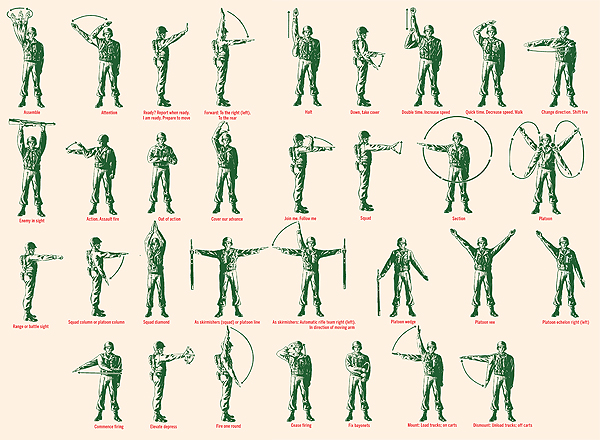
The art of communication by means of hand signals is as old as, well, hands. In scouting situations or close combat, when audible communications of any sort might alert the enemy to one’s position, soldiers soon learned the value of silently passing information via hand signals.
The signals shown here are specific to the U.S. Army during and just after World War II. Other countries used their own variations. As weapons and tactics advanced, the vocabulary grew, as did the signaling repertoire. For example, the average American platoon in Vietnam used many more signals than had their World War II predecessors. The universal aspect was that everyone in one’s unit—regardless of rank—needed to be intimately familiar with the signals. On the front lines any failure to pass the word, quickly and accurately, could be fatal.




